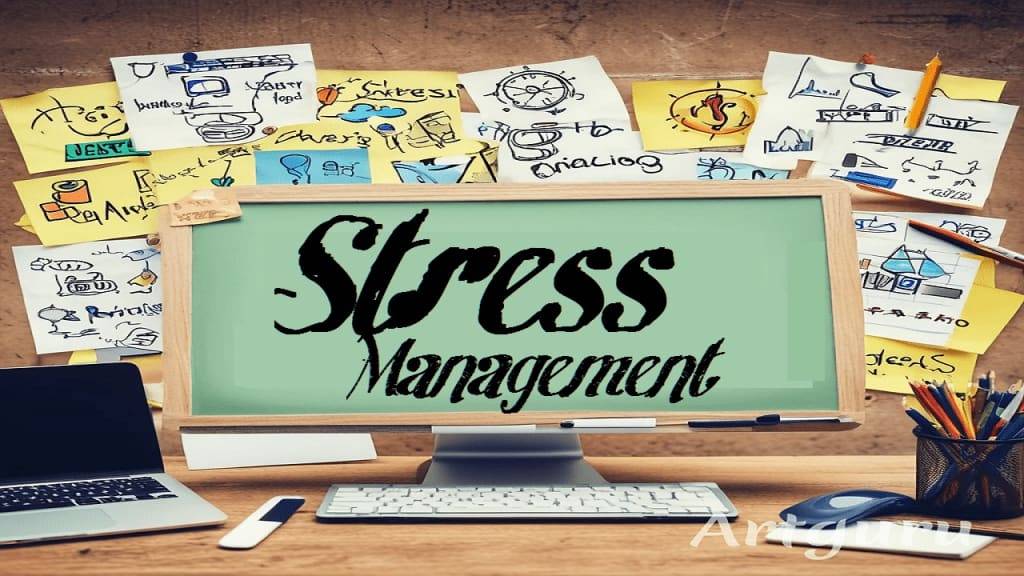Your heart races, palms sweat, and the world sharpens into hyperfocus—all because you fumbled your lunch tray in a crowded cafeteria. Though the threat is social, not mortal, your body’s primal *fight-or-flight* response kicks in just as it did for ancestors evading predators. Why does this ancient wiring still dominate our modern lives, and how can we harness it? Let’s explore.
The Biology of Stress: A Survival Legacy
When stress strikes, the brain’s hypothalamic-pituitary-adrenal (HPA) axis ...springs into action. The hypothalamus (the brain’s alarm system) signals the pituitary gland, which rallies the adrenal glands to flood your bloodstream with adrenaline and cortisol. These hormones prime your body to act: your heart pumps faster to oxygenate muscles, energy surges to the brain, and focus narrows on the perceived threat.
This system evolved to handle acute dangers—think outrunning a predator—but today, it’s triggered by deadlines, arguments, or even awkward moments. While inconvenient, this response isn’t inherently bad.
When Stress Works For You
In short bursts, stress can be a powerful ally.
- Sharpened Focus: The cortisol surge enhances alertness, helping you dodge a speeding car or nail a presentation.
- Motivation Boost: Pressure before a recital or exam often fuels practice and preparation.
- Learning Edge: Mild stress, like a surprise quiz, can sharpen memory. The hippocampus, a brain region vital for learning, thrives on brief cortisol exposure.
Teen brains exemplify this adaptive side. During adolescence, the HPA-axis becomes hyper-responsive, driving curiosity and risk-taking—traits that aid exploration and growth.
When Stress Turns Toxic
Problems arise when stress becomes chronic. Normally, stress hormones subside within 15–30 minutes. But constant stressors—a toxic job, financial strain, or social strife—keep the HPA-axis active. Over time, this leads to:
- Physical Toll: Insomnia, digestive issues, and heightened heart disease risk.
- Mental Fog: Impaired focus, memory lapses, and emotional exhaustion.
- Hyper reactivity: The brain starts perceiving minor hiccups as threats, trapping you in a stress loop.
Individual susceptibility varies. Genetics, environment, and age shape how we process stress, but no one is immune to its wear and tear.
Taming the Stress Beast: Practical Strategies
1. Move Your Body: Exercise sparks neurogenesis (new brain cell growth) in the hippocampus, building resilience. A brisk walk or team sport also distracts and energizes.
2. Connect with Others: Social bonding releases oxytocin, a hormone that soothes the HPA-axis. Even a heartfelt chat can dial down stress.
3. Practice Mindfulness: Deep breathing, journaling, or meditation fosters present-moment awareness, helping you respond—not react—to stressors.
4. Reframe Stress: View stress as a challenge, not a crisis. This mindset shift can reduce its physical impact.
The Takeaway
Stress isn’t the enemy—it’s a survival tool. The key lies in balance. By understanding our body’s ancient wiring and adopting proactive coping strategies, we can navigate modern life’s spills, squabbles, and deadlines with grace. After all, evolution didn’t prepare us for cafeteria mishaps, but with the right tools, we can thrive in spite of them
Modern life bombards us with a relentless stream of stressors—from endless notifications to societal pressures—that our Stone Age brains aren’t fully equipped to handle. While our ancestors faced acute dangers, we grapple with chronic, low-grade stress that simmers beneath the surface. The key to thriving isn’t eliminating stress entirely (an impossible feat!) but learning to channel it wisely and build resilience. Here’s how to navigate the storm with intention:
1. Decode Your Stress Triggers
Stress isn’t one-size-fits-all. What overwhelms one person might energize another. Start by mapping your unique stress landscape:
- Identify Patterns: Keep a journal for a week. Note moments when your heart races, your mood dips, or irritation flares. Are triggers tied to specific people, tasks, or environments?
- Distinguish "Good" vs. "Bad" Stress: Eustress (positive stress) fuels growth—think training for a marathon or starting a creative project. *Distress* (negative stress) feels uncontrollable, like toxic work dynamics or financial insecurity. Labeling these helps you strategize.
- Audit Your Inputs: Social media, news cycles, and even overly ambitious to-do lists can be stealth stressors. Trim digital clutter and unrealistic expectations.
2. Master the Art of Micro-Recovery
Chronic stress often stems from a deficit of recovery. You don’t need a spa day to reset—small, intentional pauses can recalibrate your nervous system:
- The 5-Minute Rule: Pause every 90 minutes (mimicking natural ultradian rhythms) for a mindful breath, a stretch, or a walk around the block. These micro-breaks prevent HPA-axis overload.
- Nature’s Reset: Studies show even 20 minutes in a park lowers cortisol. Try the 20-5-3 rule: 20 mins outside daily, 5 hours monthly in a wooded area, 3 days yearly in wilderness.
- Tactical Breathing: The 4-7-8 technique (inhale for 4, hold for 7, exhale for 8) activates the parasympathetic nervous system, dialing down fight-or-flight within minutes.
3. Rewire Your Brain’s Stress Response
Neuroplasticity means you can train your brain to handle stress more adaptively:
- Reframe the Narrative: Instead of “I can’t handle this,†try “This is challenging, but I’ve overcome similar things before.†Cognitive reappraisal reduces perceived threat levels.
- Practice “Stress Inoculationâ€: Gradually expose yourself to manageable stressors (e.g., public speaking in small groups) to build tolerance. Like a vaccine, this teaches your brain resilience.
- Leverage Gratitude: Neuroscientist Andrew Huberman recommends a daily 1–3 minute gratitude visualization. This shifts focus from lack to abundance, quieting the amygdala (the brain’s fear center).
4. Fuel Your Body’s Resilience
Stress depletes nutrients and disrupts bodily systems. Support yourself from the inside out:
Prioritize Sleep Hygiene: Cortisol and melatonin (the sleep hormone) are inversely linked. Dim lights after sunset, avoid screens 1 hour before bed, and aim for 7–9 hours.
Eat for Stability: Blood sugar swings mimic stress responses. Pair complex carbs (oats, sweet potatoes) with protein and healthy fats to avoid crashes. Magnesium-rich foods (spinach, almonds) also calm the nervous system.
Hydrate Strategically: Dehydration spikes cortisol. Sip water throughout the day, and add electrolytes during high-stress phases.
5. Build a Stress-Proof Lifestyle
Resilience isn’t built during crises—it’s cultivated daily:
Move Mindfully:Exercise isn’t just a cortisol burner. Yoga, tai chi, and even walking synchronize breath and movement, signaling safety to the brain.
Create “Stress Buffersâ€: Develop non-negotiable rituals—a morning coffee ritual, evening tea, or weekend hobby—that act as anchors amid chaos.
Cultivate “Unproductive†Time:** Schedule guilt-free downtime. Boredom sparks creativity and lets the brain process unresolved stress.
6. Harness Connection as Medicine
Loneliness amplifies stress; connection heals. But quality trumps quantity:
- Seek “Co-Regulationâ€: Spend time with people who calm your nervous system. Their steady presence can downregulate your stress response.
- Volunteer or Mentor: Helping others releases oxytocin and serotonin, counteracting cortisol. It also puts personal struggles into perspective.
- Set Boundaries: Not all relationships are restorative. Politely limit time with energy-draining individuals.
7. Embrace Technology… Wisely
Tech isn’t inherently evil—it’s about curation:
- Use Apps as Allies: Try Headspace for guided meditation, *Finch* for self-care micro-goals, or *Freedom* to block distracting sites.
- Batch Notifications: Designate 2–3 times daily to check emails/social media. Constant alerts keep the HPA-axis on high alert.
Digital Sunset Replace late-night scrolling with analog wind-down routines (reading, puzzles, or stargazing).
The Bigger Picture: Stress as a Teacher
Stress isn’t just a hurdle—it’s feedback. It highlights unmet needs, misaligned priorities, or areas where growth is possible. By listening to your body and mind, you transform stress from a foe into a guide.
Modern life won’t stop being stressful. But with these tools, you can shift from merely surviving to thriving—one breath, one boundary, and one small act of resilience at a time.


